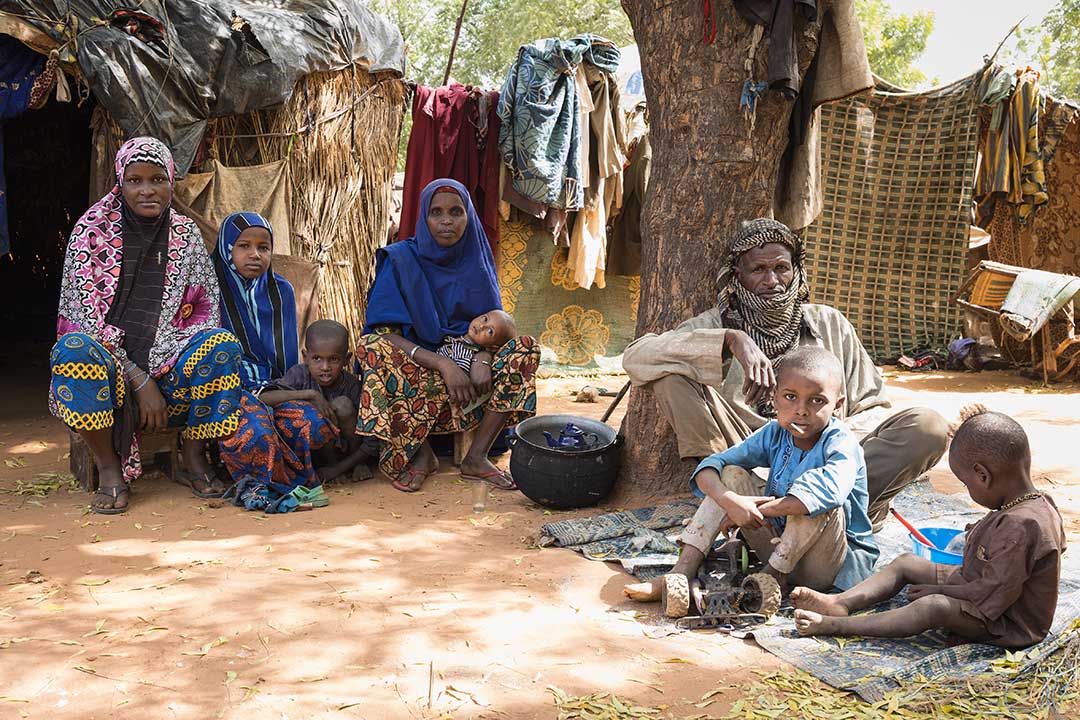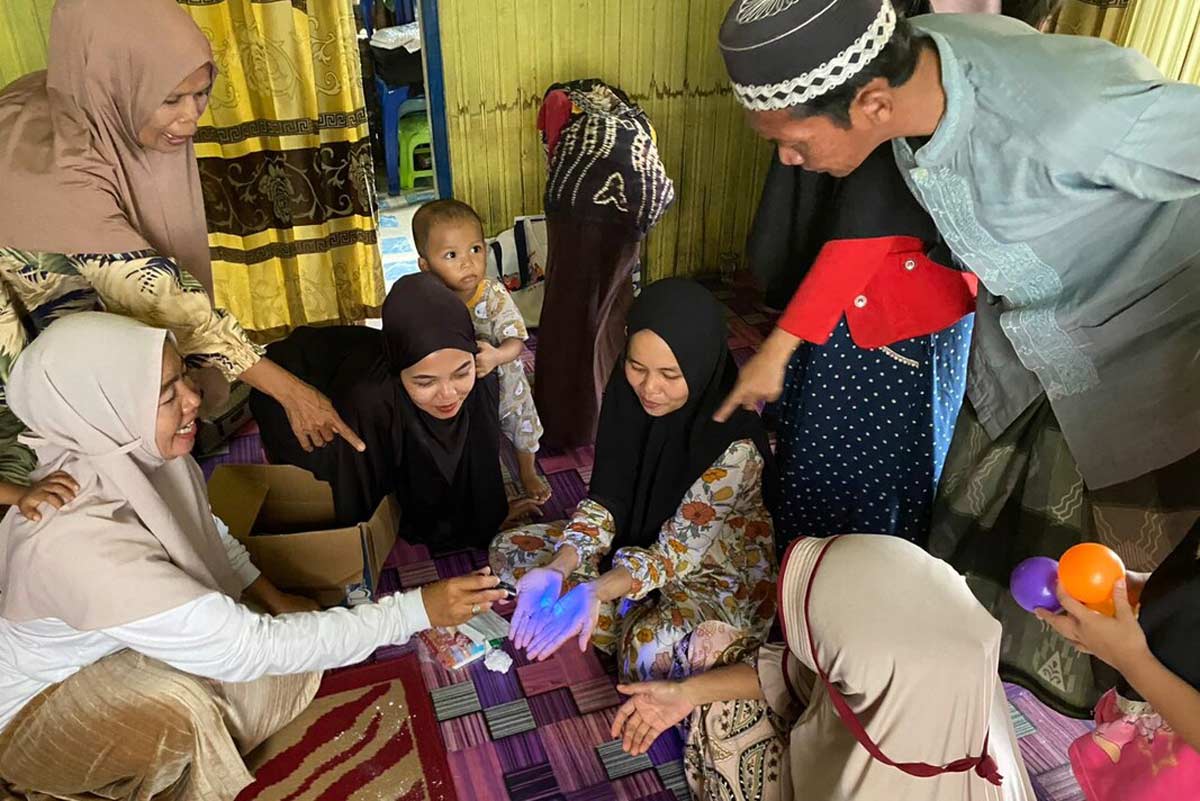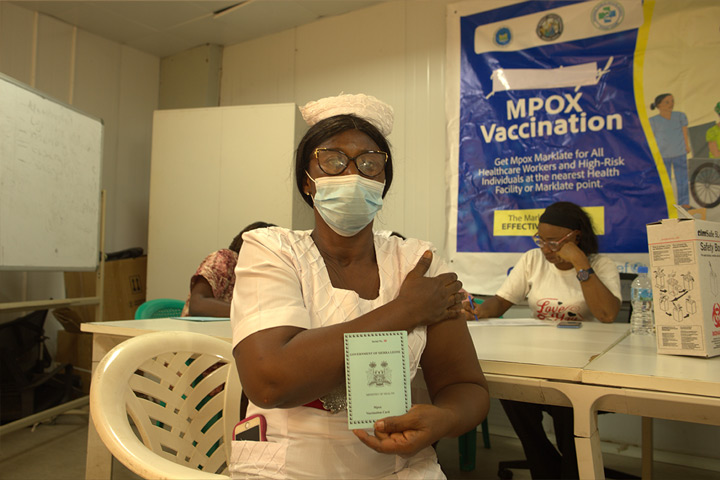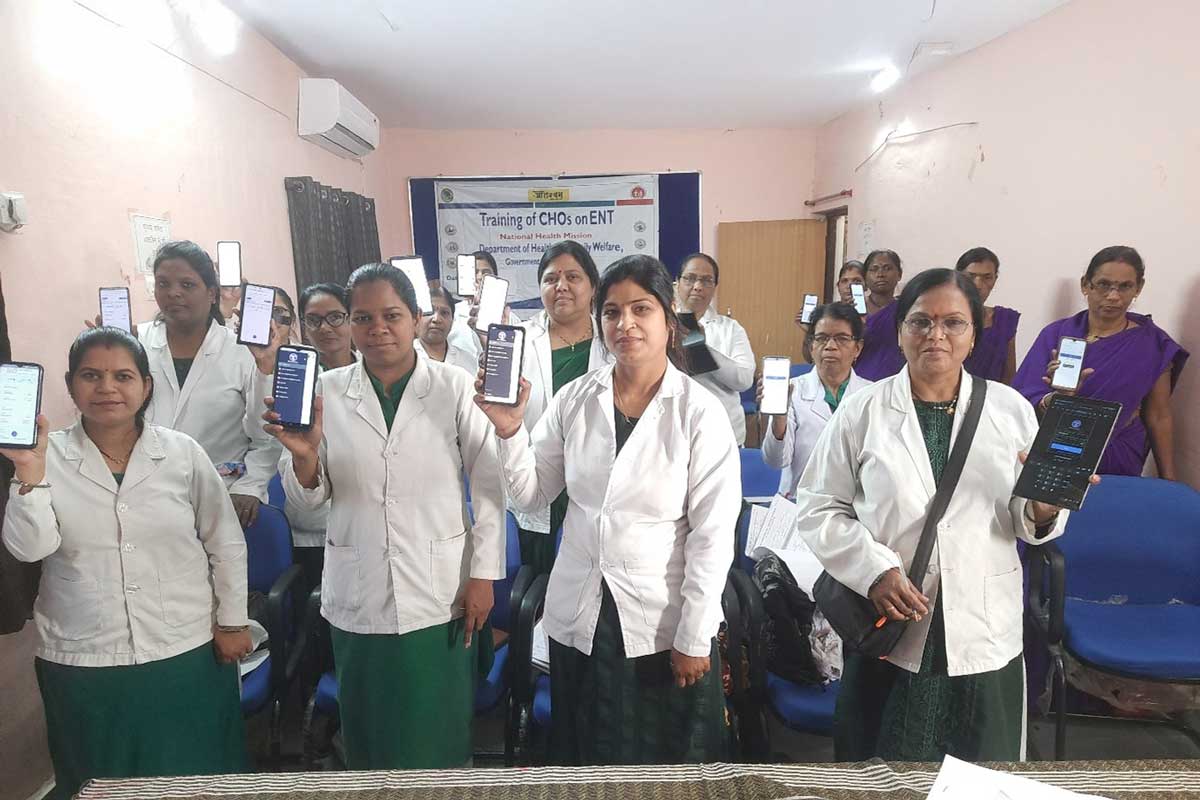Global immunisation in 2023: 7 things you need to know
While global childhood immunisation coverage has remained steady overall, the latest WHO and UNICEF estimates suggest there has been significant progress in some areas.
- 15 July 2024
- 4 min read
- by Gavi Staff
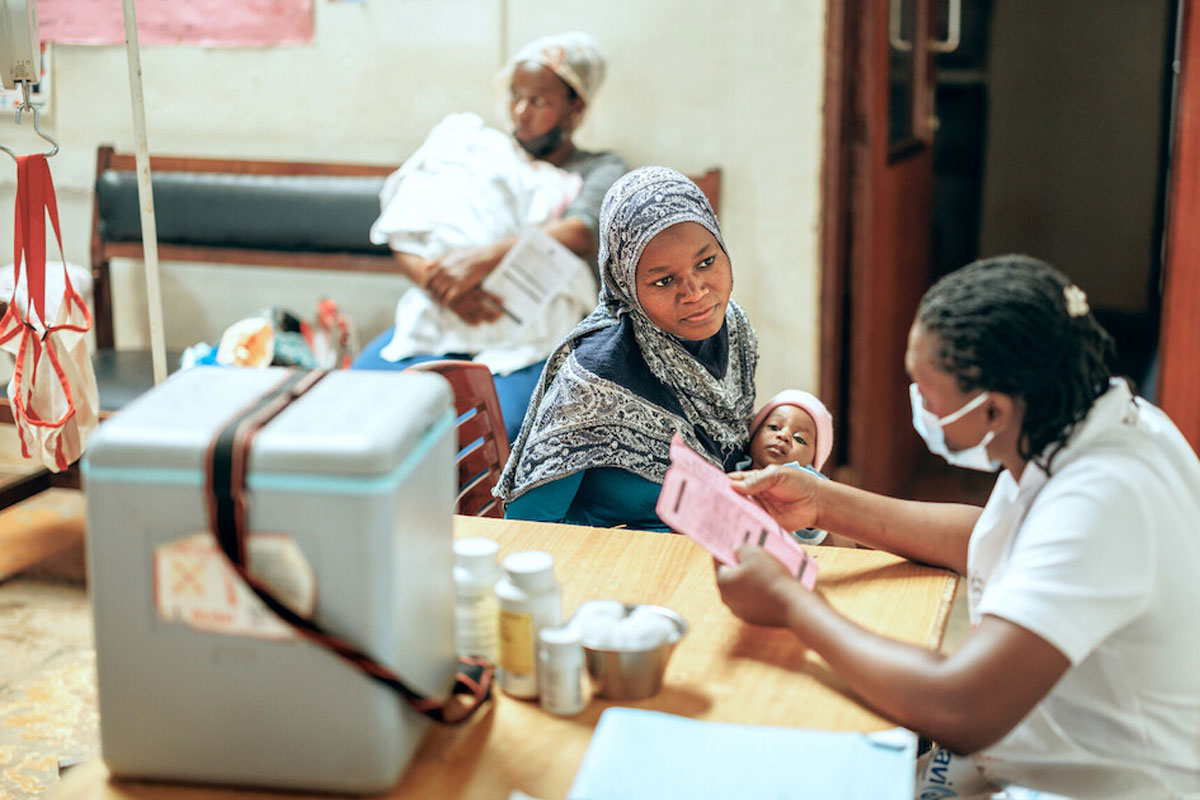
Each year, the World Health Organization (WHO) and UNICEF publish a comprehensive update on immunisation trends. This data, known as the WHO/UNICEF Estimates of National Immunisation Coverage (WUENIC) provides an important snapshot on the state of global immunisation and how many of the world’s children are protected against 13 key diseases.
So, what does the latest data say about progress over the last year; particularly in the 57 countries supported by Gavi, the Vaccine Alliance? This guide to the state of global immunisation provides seven key takeaways.
1) More children are being immunised than ever before
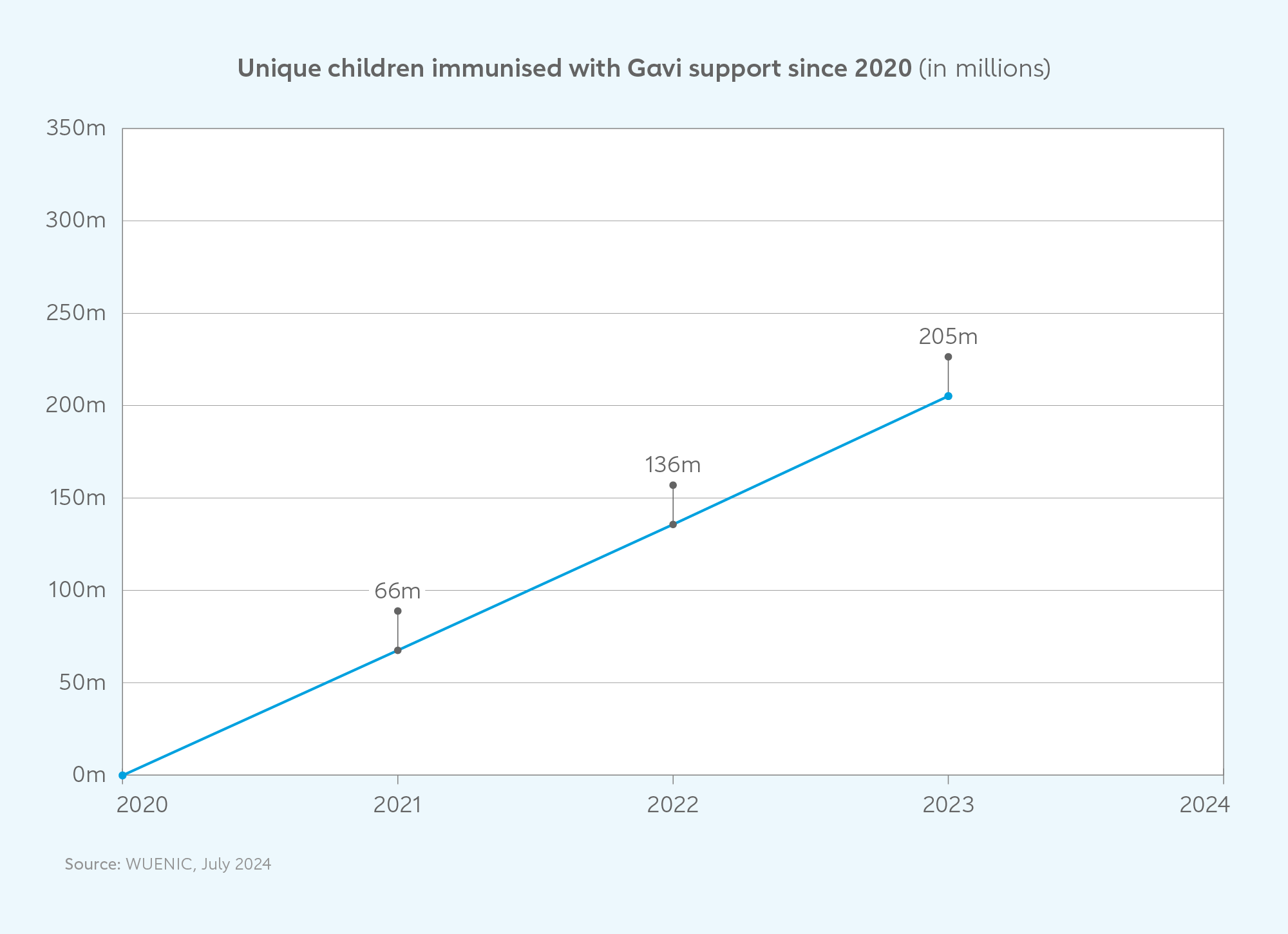
In 2023, 69 million unique children received Gavi-supported routine immunisations – more than in any year apart from 2019. This brings the running total during Gavi’s current strategic period (which runs from 2021–25) to more than 205 million, and suggests the Alliance is on track to reach its target of immunising 300 million children by 2025.
2) Yet immunisation coverage has remained steady overall
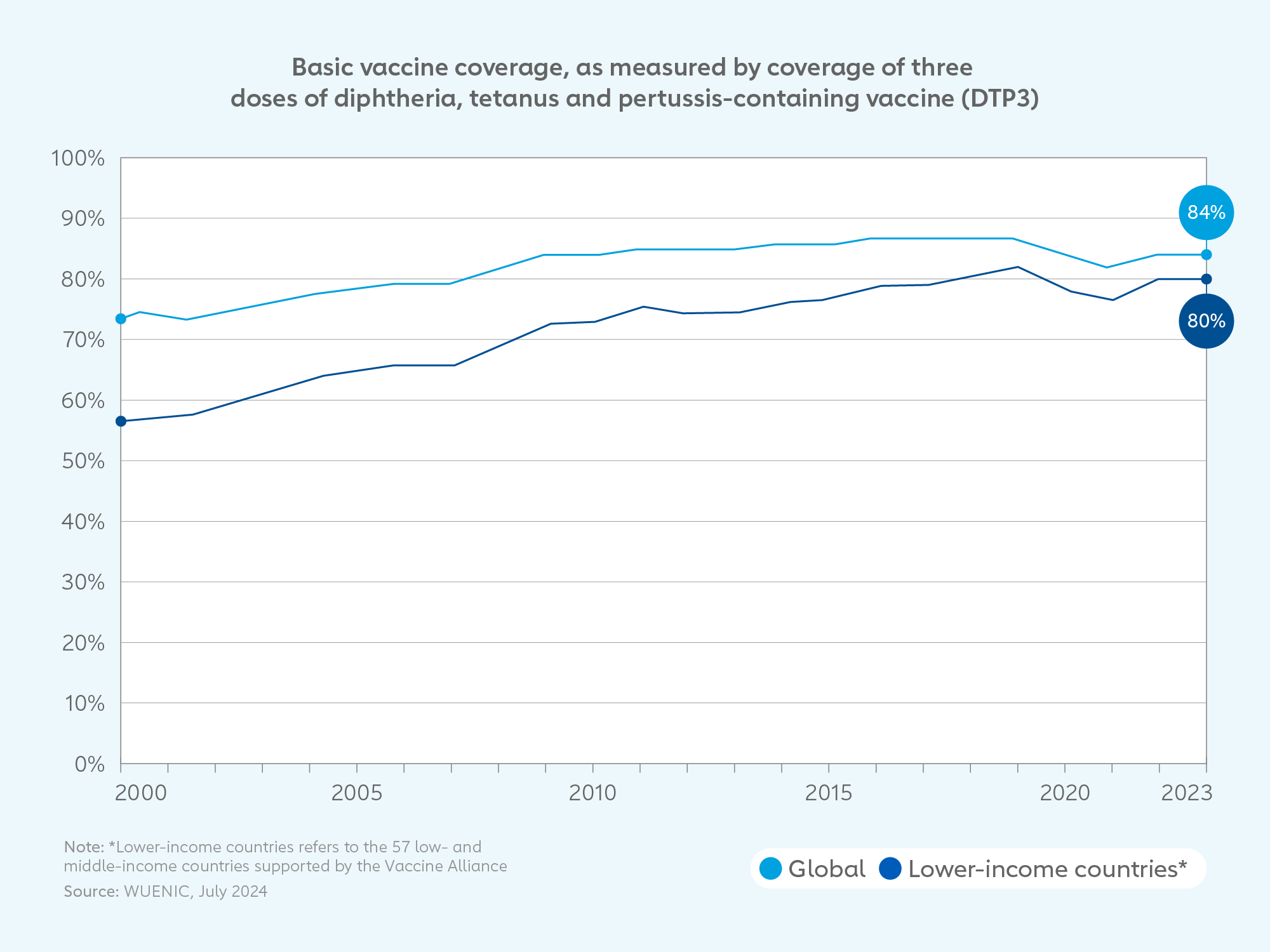
The proportion of children who received three doses of the vaccine against diphtheria, tetanus and pertussis (DTP3) in 2023 – a key marker for global immunisation coverage – across Gavi-supported countries remained steady at 80% between 2022 and 2023 and has not yet returned to pre-pandemic levels. Population growth in Gavi-implementing countries is a major factor here, as every year the birth cohort is larger. These figures underscore the need for ongoing catch-up, recovery and system-strengthening efforts.
Global DTP3 coverage also remained constant at 84%.
3) Countries in Africa are bucking global trends
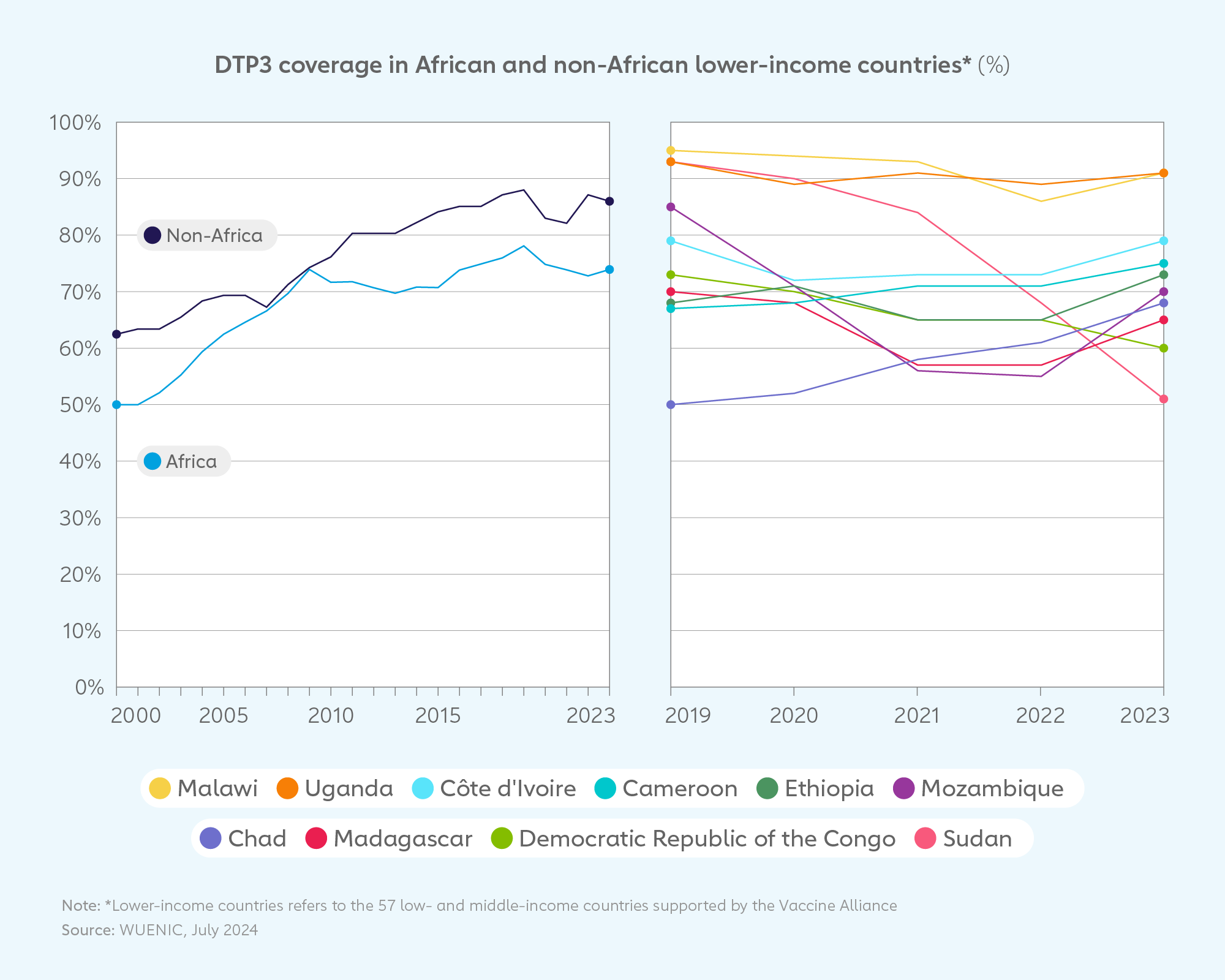
While global immunisation coverage has stalled, Gavi implementing countries in Africa saw an improvement, with DTP3 coverage rising one percentage point since 2022 to 73%. This was largely driven by coverage improvements in Ethiopia, Mozambique, Madagascar, Chad, Côte d’Ivoire, Uganda, Cameroon and Malawi.
However, increased fragility and conflict in the region also saw some countries suffer considerable declines , including notable declines in DTP3 coverage in Sudan and a further decline in the Democratic Republic of the Congo.
4) Breadth of protection against disease is increasing
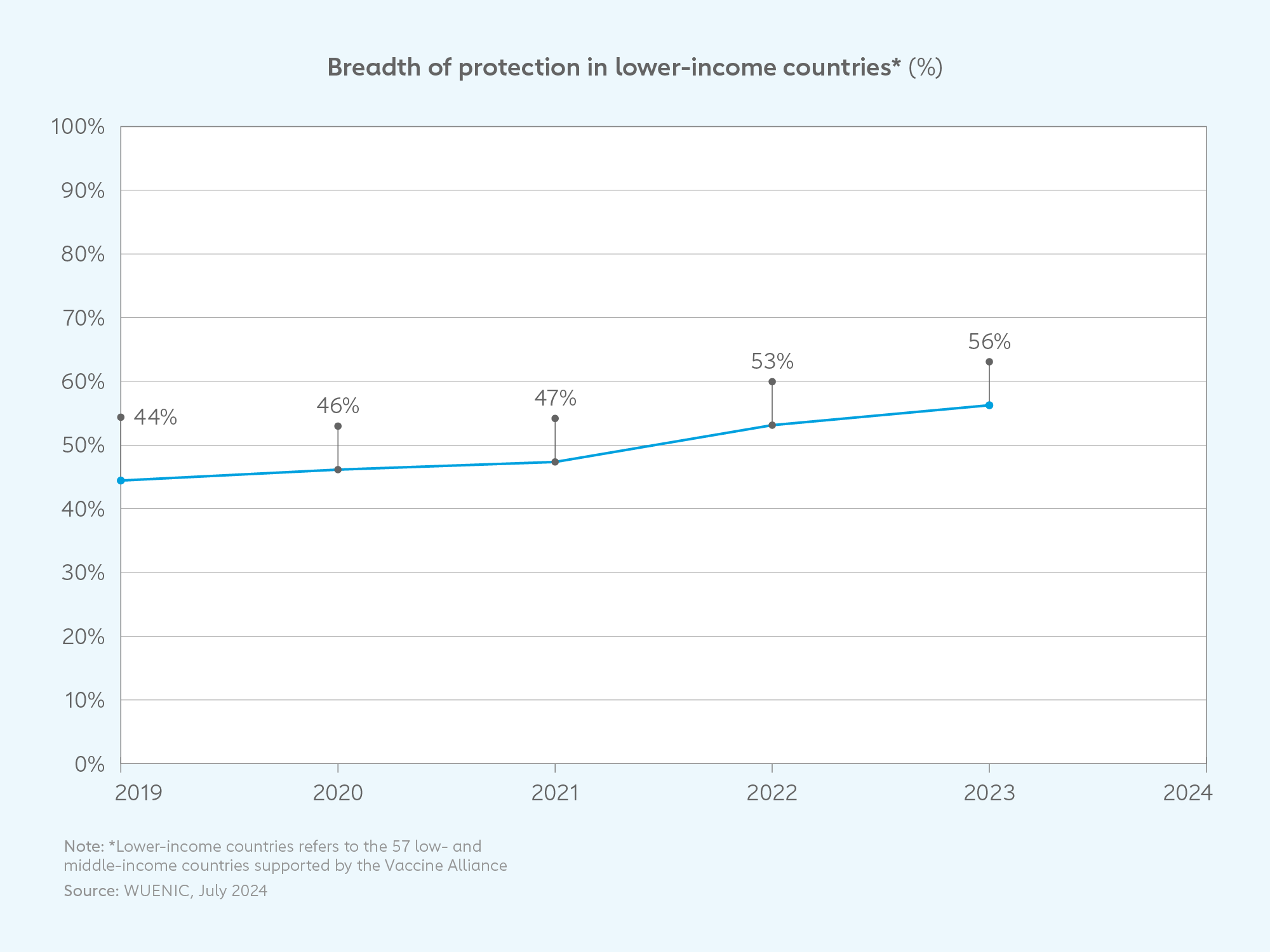
With Gavi’s support, countries are protecting children against a broader range of diseases than ever before. One important metric guiding Gavi's work is 'breadth of protection', which averages coverage of a full course of vaccines against ten preventable diseases: Haemophilus influenzae type B (Hib), HPV, polio (through the inactivated polio vaccine), Japanese encephalitis (JE), measles, meningitis A, pneumococcal disease, rubella, rotavirus and yellow fever.
In 2023, average coverage across all these essential vaccines was 56%. This is three percentage points higher than in 2022, and a 12-percentage point increase from 2019.
The introduction and scale-up of additional vaccines against polio, pneumococcus, measles, rotavirus and HPV have helped to drive this increase.
5) More girls are being protected against cervical cancer than ever before
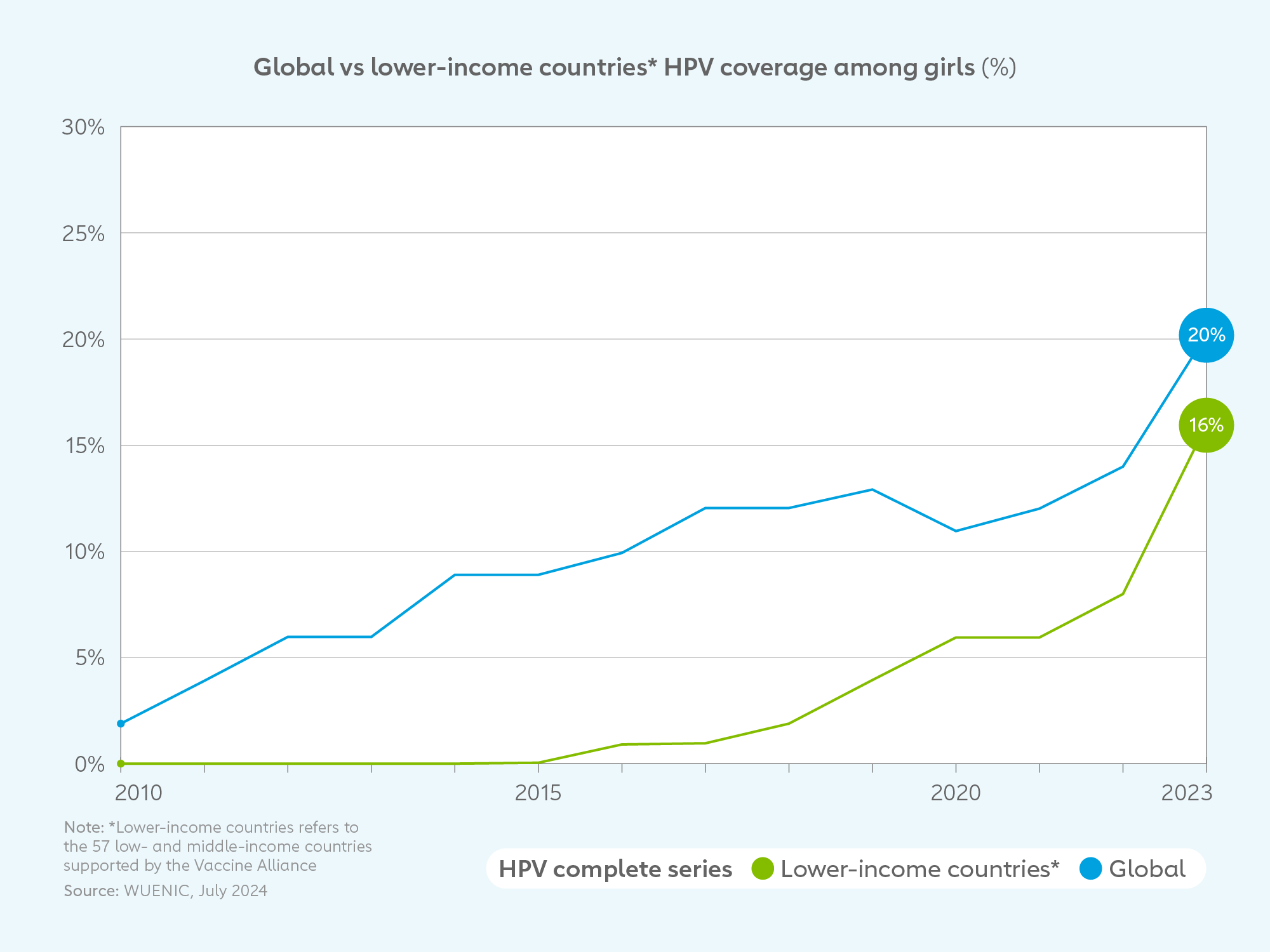
Globally, the share of adolescent girls who received at least one dose of HPV vaccine (HPV1) increased from 20% in 2022 to 27% in 2023, largely driven by strong introductions in Gavi-supported countries, such as Bangladesh, Indonesia and Nigeria. The use of the single-dose HPV vaccine schedule has also helped boost vaccine coverage.
In Gavi-supported countries, the proportion of girls who have received a full course of HPV vaccines (HPVC) now stands at 16% – double the 2022 figure.
6) Too many children still aren’t receiving any routine immunisations
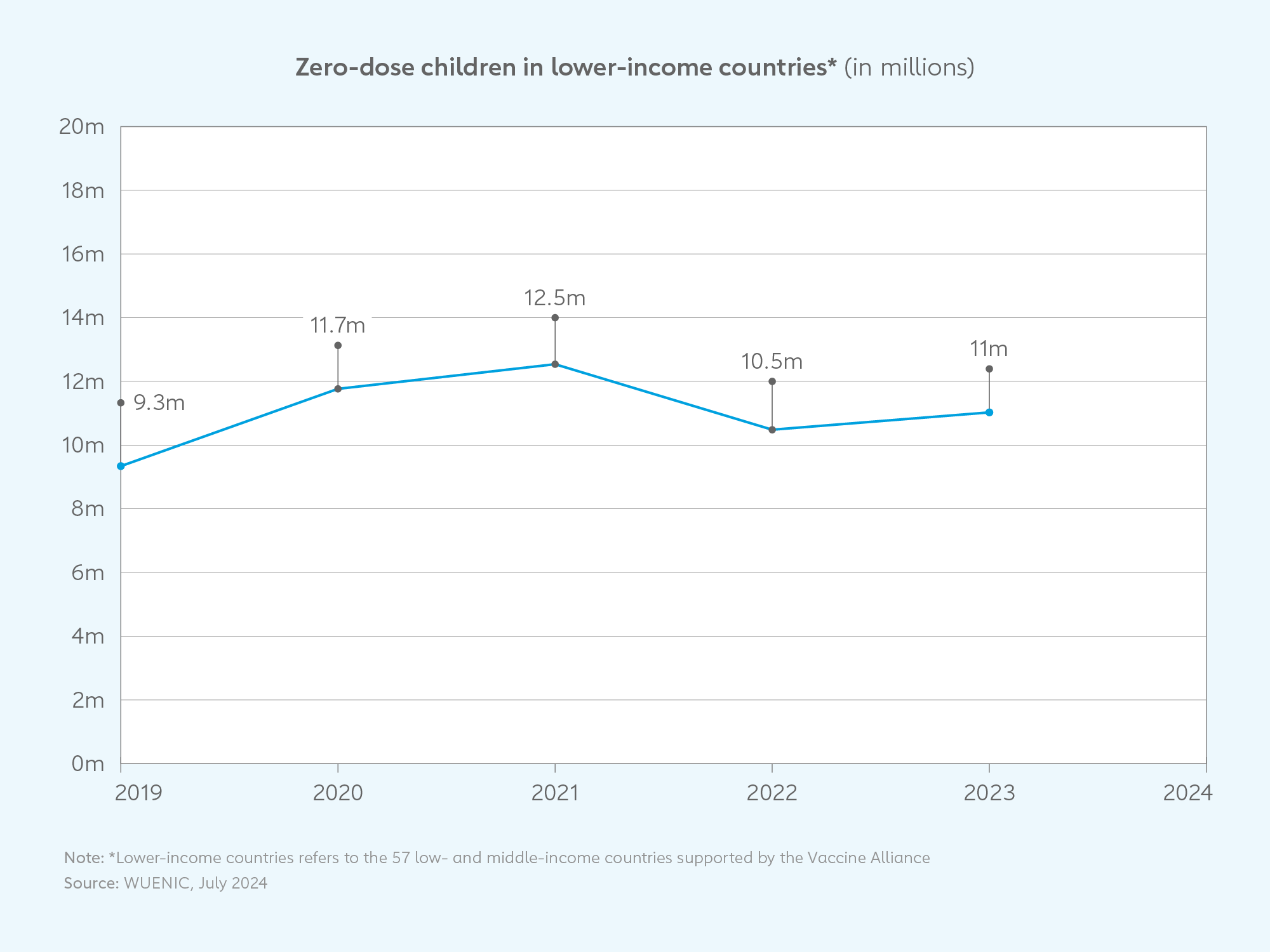
A worrying number of children still receive no essential childhood immunisations. The latest WUENIC data suggests that there were 11 million such ‘zero-dose children’ in Gavi-supported countries in 2023, a 0.5 million increase since 2022. With the number of zero-dose children in Africa declining, it is possible that some of the innovative strategies being put in place to improve reach in fragile settings may be starting to take effect, however it is clear that more needs to be done to ensure that all children have access to life-saving vaccines.
7) Measles outbreaks are an ongoing threat
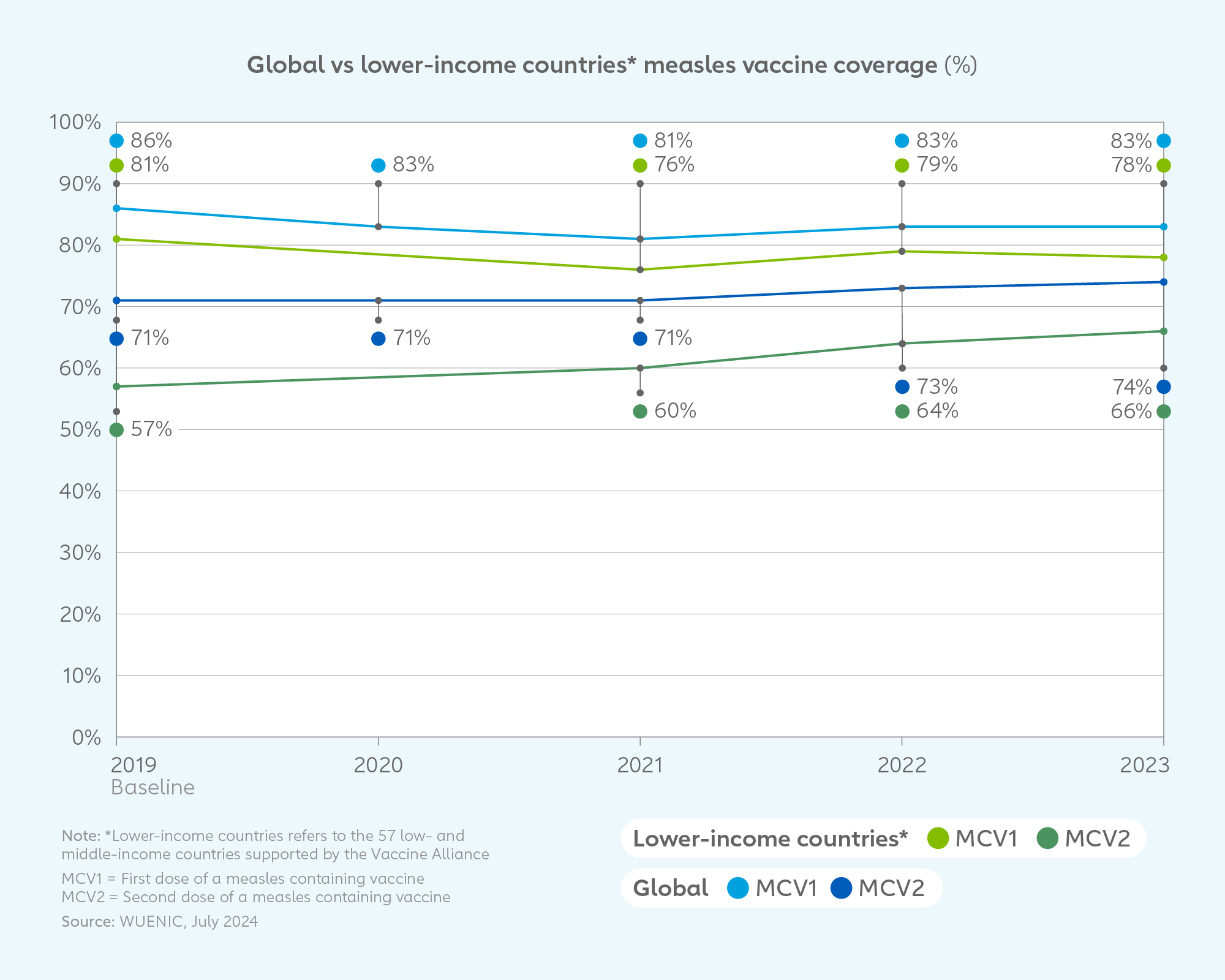
Coverage with a first dose of measles-containing vaccine (MCV1) declined by one percentage point between 2022 and 2023 in Gavi-supported countries, and now stands at 78%. Although second-dose coverage increased to 66%, these figures fall well short of the coverage needed to prevent outbreaks, avert unnecessary deaths and achieve elimination goals. Globally, vaccination rates against measles also continued to stall, with only 83% of children receiving their first dose of the measles vaccine, and 74% receiving their second dose in 2023.
To help address this, in May 2024 Gavi launched its largest ever measles vaccination drive in Africa, with the goal of reaching up to 100 million children across 20 countries, in addition to routine immunisation programmes.
